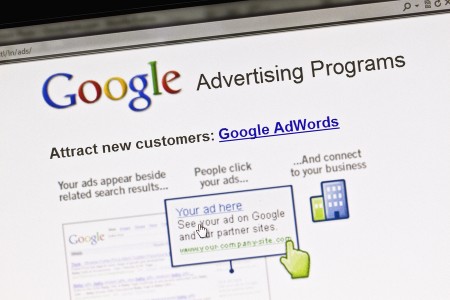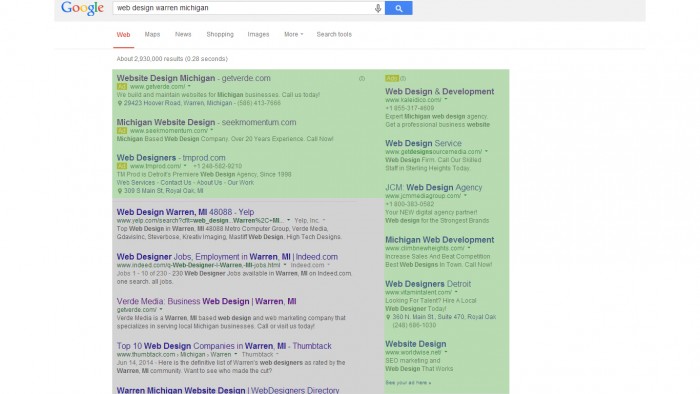Learning Hub | Paid Search Advertising
The Potential Power of Adwords Summed Up In One Image
July 17, 2014 | Jon Teodoro

It is a well known fact that paid advertising is the bread and butter of Google’s revenue stream, accounting for 91% of the total revenues in 2013. That’s a significant figure that no marketer can ignore. Despite this, many small businesses are straying away from utilizing Google AdWords as a means of generating new leads and sales.
From my personal experience, here are the three most common things I hear from clients about why they don’t use Google Adwords:
- “It doesn’t work. I used the free $100 coupon and got absolutely NOTHING out of it!”
- “The platform is too complex – what’s the difference between broad, phrase and exact match keywords anyway?”
- “It’s an advertisement. People hate advertisements. I’ll stick with organic SEO.”
Firstly, I believe that inexperienced business owners set their expectations too high when it comes to online advertising. Before executing ANY kind of marketing campaign, you should really consider your goals, your target audience and your competition, then set your expectations accordingly. If you’re only relying on spending $100, don’t set that expectation too high, especially if plan to “set and forget” your first AdWords campaign.
Secondly, Adwords can be complex. For a business owner that isn’t tech-savvy, the Google Adwords platform can appear to be very intimidating at first. Like all things, if you take the time to learn, read and practice, navigating and using the Adwords platform can get less scary over time.
Lastly, Adwords ads are indeed advertisements. In the past, Google put the yellow background behind ads to distinguish the paid ads from the organic ads. Not anymore. Nowadays, there is a simple, small yellow rectangle that says “Ad” next to each paid advertisement. To the untrained eye, this could be easily mistaken for an organic search result (a plus for paid marketers). Which leads me to show you the following image:

Advertisements Take Up More Real Estate Than Organic Listings
I’m a pretty empirical guy, so backing any type of claim or statistic with numbers and a logical methodology behind it is standard. Therefore, I decided to break down and measure the actual real estate that is being used by Google Adwords in an effort to show the potential power of Google Adwords to increase leads and visibility. Here’s what I found:
- As a baseline, the size of the image above is simulated as if the window was 1366px x 768px resolution, with the window spanning completely top to bottom and left to right.
- The size of the above-the-fold search results (organic + paid) shown is 775px x 633px, which equates to an area of 490,575 pixels.
- The size of the above-the-fold organic search results shown is 531px x 382px, which equates to an area of 202,842 pixels.
- The size of the above-the-fold paid search results at the top is 531px x 251px, which equates to an area of 133,281 pixels.
- The size of the above-the-fold paid search results at the side is 244px x 633px, which equates to an area of 154,452 pixels.
- The total area of the above-the-fold paid search results (top + side) is 287,733 pixels.
- The paid search results take up 58.65% of the total above-the-fold real estate on the standard search results page with no local listings.
Additionally, there are 9 full titles that are visible which are attributed to paid search results, versus only 5 for the organic search results. In terms of visibility, I think it’s reasonable to say that Adwords would be the better option and based on the previous figures, it is safe to say that the majority of searchers will see mostly paid advertisements
So why do so many businesses have bad experiences with Google Adwords?
My hypothesis, stated in three words: lack of optimization.
One of the major aspects of running an Adwords campaign consists of deep research of keywords, not only looking at them from a literal perspective but from the perspective of your potential buyers. Remember, all keywords are not created equally. You want to account for what types of keywords are geared towards research versus actions. This takes time – time that many business owners don’t have.
Having a properly optimized landing page is a also key component to a successful Adwords campaign. You can’t just build a free website, buy some ads and expect some results. You should, however, utilize some kind of analytics software like Google Analytics to measure the engagement of users when they visit your website, then optimize accordingly.
Overall, Adwords is what you make of it. If you don’t invest much time into learning how to use it, you won’t get much out of it. If you take the time to learn what you’re doing and build the proper team to help you do it, you have a great chance of getting an awesome return on investment.
What are some easy Adwords management tips that you can share with other business owners? Comment below!
